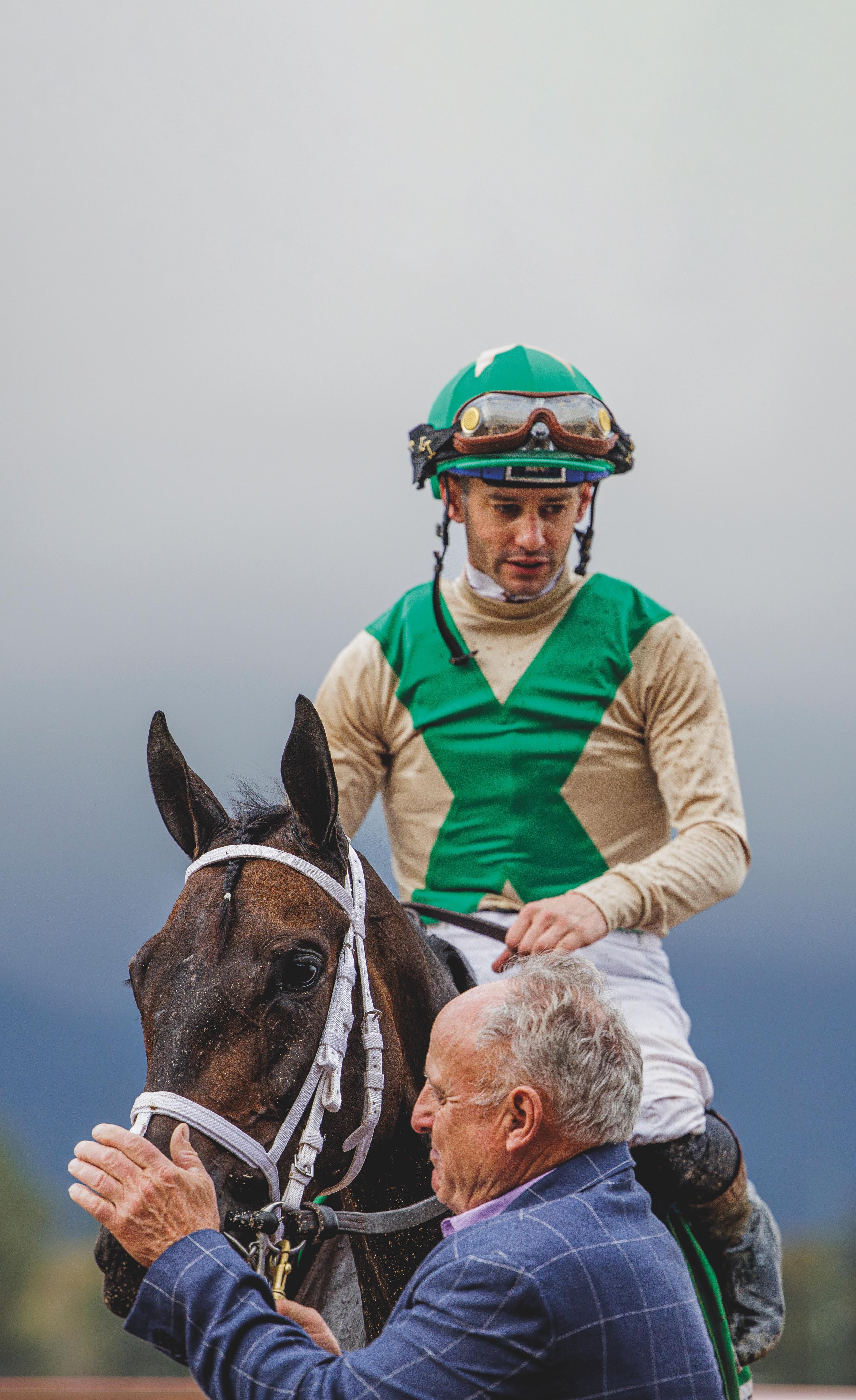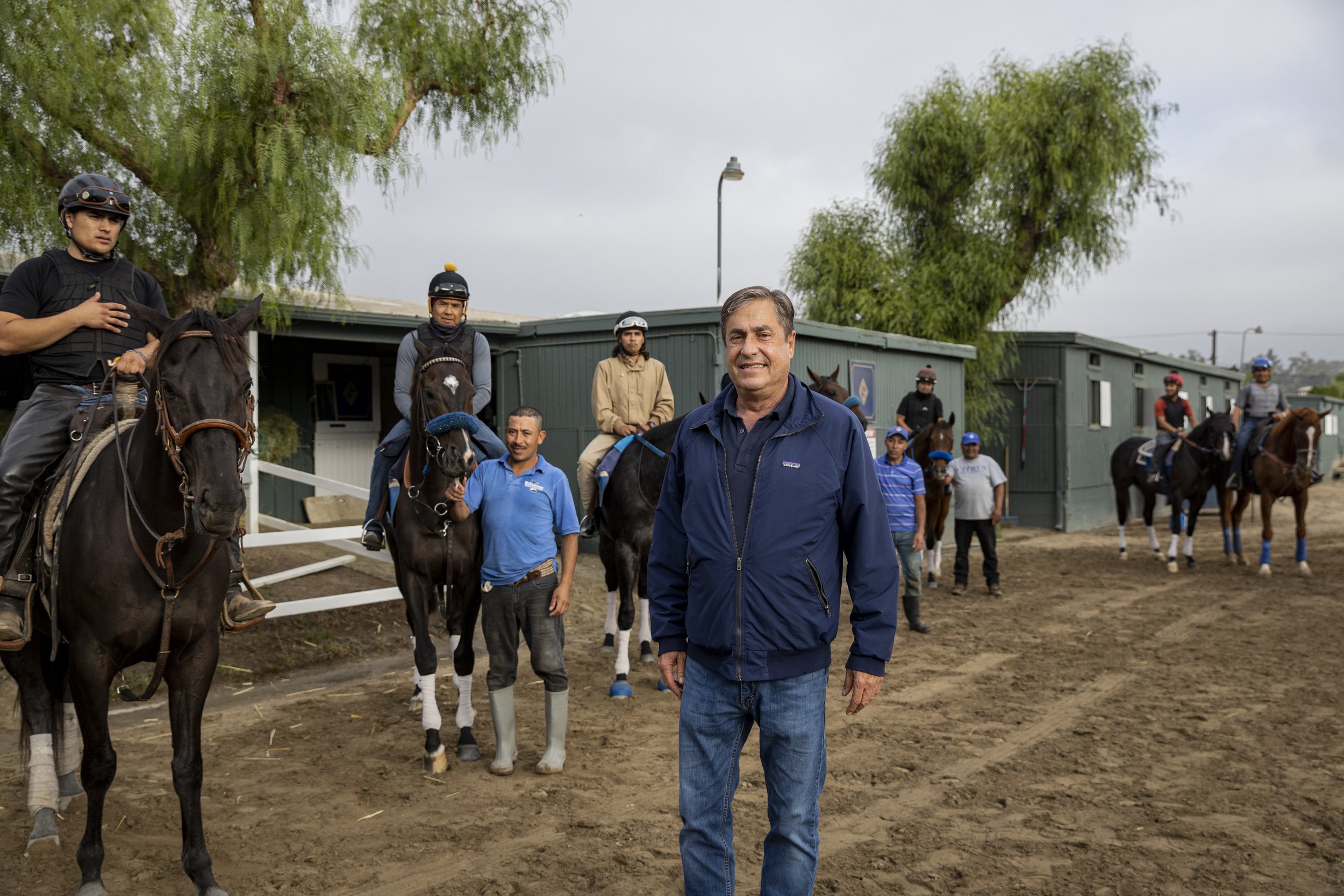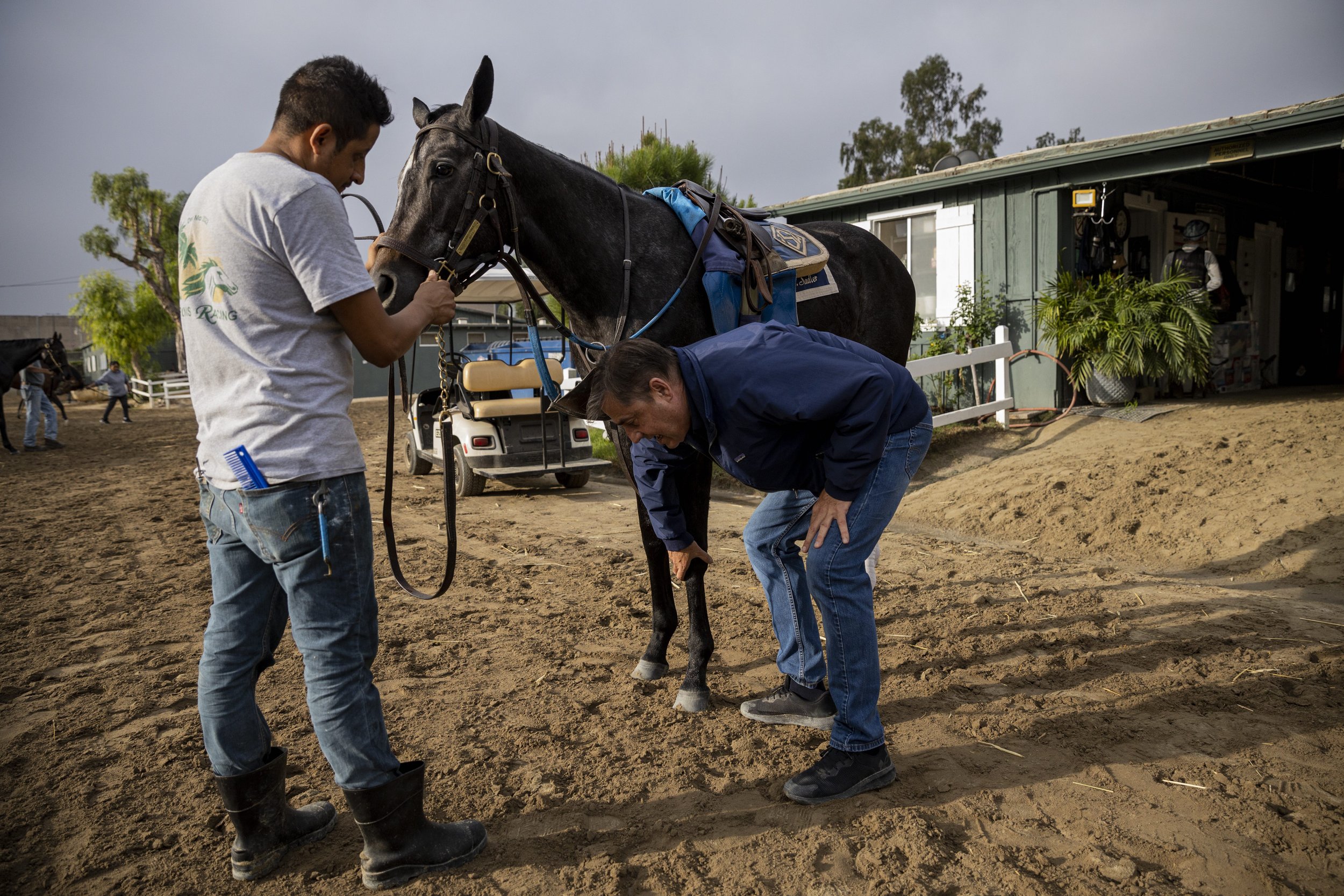Hunter Valley Farm
/Article by Bill Heller
A Mo Reay
Six days before St. Patrick’s Day, the four Irish partners of Hunter Valley Farm near Keeneland found their elusive pot of gold, not at the end of the rainbow, but in the final 10 yards of the Gr.1 Beholder Stakes. That’s where their filly A Mo Reay thrust her nose past odds-on favorite Fun to Dream, giving the Irish quartet their first Gr.1 stakes victory at Santa Anita; half a world away from the Irish National Stud in Kildare, where two of the four, Adrian Regan and Fergus Galvin, met in 1991.
Hunter Valley Farm’s John Wade, A Mo Reay & jockey Flavien Prat.
“It was a surreal day,” Regan said. “When we set up the farm, the thought of having a Gr.1 was never even thought about. We were hoping to make the farm viable. We’ve been very lucky. Without my partners, it never would have happened for sure.”
Asked if he could ever have imagined such a feat when he was a younger lad in Ireland, Adrian’s buddy Galvin said, “It was nowhere near the front of my mind.”
Certainly, their two somewhat silent partners, Tony Hegarty and John Wade, had no idea. Those two friends met in a tavern in Chicago, then became business partners, founding A & J Construction, a successful construction company in Lockport, Illinois, 30 miles southwest of Chicago. Hegarty and Wade started out as carpenter contractors and eventually switched to land developers and custom home builders. “We’re doing okay,” Wade said.
Okay enough to speculate in Thoroughbreds. “It turned out to be an amazing adventure,” Hegarty said. “We’re more or less silent partners. Fergus and Adrian pick the horses.”
They do so adeptly. “Those guys—they come up with some good ones,” Wade said.
Both Galvin and Regan credit their fathers for their equine education.
“It was part of my childhood,” Galvin said. “My father ran a small stud farm in Dublin. I have him to thank for my early grounding and the early education. He had a couple of horses in training. From the age of eight, I was by his side most of the way. I have him to thank for where I am now. He’s doing great—keeps a close eye on the U.S. My dad is 84.”
Galvin said both his parents visit the United States. “They came over last spring to Keeneland,” he said. “They really love Kentucky. There’s no place like Kentucky in the spring. Kentucky is almost my home away from home. In Ireland, everyone has some involvement. There’s a large part of our population who has connections in the horse business. They have a deep love of horses.”
They frequently pass that love on to the next generation, a tradition Galvin and his wife, Kate, who works at Godolphin, will likely instill in their four young children, Marie, 10, Harvey, 8, and twin boys Joseph and Nicholas, 6.
Adrian Regan & Flavien Prat
Galvin’s experience at Irish National Stud helped shape his future. The Stud, founded in 1918, annually offers a six-month residential course which begins every January. Its goal is “to equip learners with the knowledge, skills and competence required to perform effectively in responsible positions in the Thoroughbred industry.”
It’s where Regan and Galvin became life-long friends. Regan, too, credits his father: “I wanted to be a trainer like my father T.A. was. When I left school, I went working for him.”
Both Galvin and Regan honed their skills before deciding to buy a farm. “I’ve been lucky enough to have some great employers before we started out,” Galvin said. “First I was at Pin Oak Stud for five years. Then I ran a small operation, Newgate Farm, and did a six-year stint at Ashford. It was very invaluable to me going forward. That really sent me on the path we are on today.”
Regan spent four years at Langford Farm breaking yearlings. “I loved my time there,” he said. “It gave me a great foundation.”
Providence brought Hegarty and Wade together. “Myself and Tony became friends when we got to this country in March 1981,” Wade said. “I had just come over here in the middle of March. He came around the same time. We hung out together. We were buddies. We started our own construction business.”
Like Galvin and Regan, Wade had a love of horses growing up in Ireland. “I loved them,” he said. “I didn’t have the funds to buy any.”
Then Wade went to Kentucky. He watched Unbridled win the 1990 Kentucky Derby—as his trainer Carl Nafzger called the stretch drive for owner Mrs. Genter—and was hooked. “That’s what probably did it,” Wade said. “I had another Irish friend who would go to Keeneland: Pat Costello. He advised me to take a run out to Lexington to see the farms. I met a bunch of my countrymen. Every now and then, some of them did syndicates. I said, “If you do it again, count me in.” Then I talked my partner, Tony, into getting involved.”
Hegarty didn’t have an early equine education in Ireland. “I’m from northwest Ireland,” he said. “Horse racing is in the other parts of Ireland. Up my way, there was no horse racing. There are no tracks.”
Yet, he was all-in joining his friends to buy and breed Thoroughbreds. Together, the four Irishmen purchased Golden Gate Stud in Versailles in 2004 and renamed it Hunter Valley Farm. In its first year of operation, its first yearling that went to auction was Scat Daddy. All he did was post five wins, including the Gr.1 Florida Derby, in nine starts, earn more than $1.3 million and become the sire of 69 stakes winners, including undefeated Triple Crown Champion Justify before dying at the age of 11. Hunter Valley Farm had sold him as a yearling for $250,000. “Unbelievable to have that quality of horse in our very first year,” Wade said.
In November 2022, the Irishmen bought three-year-old A Mo Ray for $400,000 in the Fasig-Tipton Sale. Trained by Brad Cox, she won a $97,000 stakes at the FairGrounds and the Gr.3 Bayakoa Stakes at Oaklawn Park.
A Mo Reay and jockey Flavien Prat (#5) dug in to edge out Fun to Dream to win the Gr.1 2023 Beholder Mile at Santa Anita Park.
Cox shipped her to Santa Anita to contest the Gr.1 Beholder Stakes March 11. The filly she had to beat was Bob Baffert’s Fun to Dream, who had won four straight and six of her seven lifetime starts. She went off at odds-on, A Mo Reay was the 7-1 third choice in the field of eight.
“It was funny going back to Santa Anita,” Regan said. “I did a short stint with Bob Baffert years ago.”
In deep stretch, Baffert’s favorite was desperately trying to hold off the rallying A Mo Reay and jockey Flavien Prat. They crossed the finish line in tandem.
Hegarty and his wife, Sheila, were watching the race from their home. “We were screaming our heads off,” he said. “You’re screaming at the TV, egging her on, egging her on. I thought she got up.”
She did.
Wade was asked if it occurred to him that the race was six days before St. Patrick’s Day. “It did not,” he said. “But we celebrated like it was St. Patrick’s Day.”
















